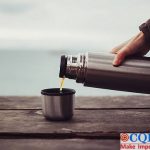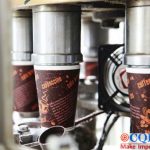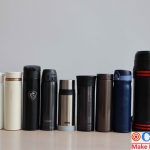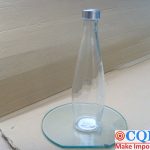Paper Cup Inspection,How to Perform That
The composition and main structure of paper cup
The product is a kind of paper container. The base paper ( white cardboard ) was made of chemical wood pulp by mechanical processing and bonding to a cup-shaped appearance. It mainly consists of a cup body, a cup mouth and surface printing. In paper cup inspection, special attention should be paid that the cup mouth should not be printed within 15mm from the cup body and the cup bottom should not be printed within 10mm from the cup body. “The absence of printing at the mouth of the cup is a protection to consumers.”At present, there is no printing ink available for food contact. When drinking water, the lips touch the cup mouth, and the ink in the printed pattern may be ingested, especially the benzene – containing ink, which is more harmful to health. At the same time, when you set a cup, the bottom of the cup has a printed pattern and it is easy to rub the color onto the inner wall of another cup, so the bottom also requires no printing. Importers should arrange the Initial production inspection at early production of products.Starting from the source, grasp the problem of printing to ensure compliance with printing standards.

The core manufacturing process
Complete technological process: raw paper coating – slitting – sample typesetting – printing – film cutting – sterilizing – forming – sterilizing and boxing – warehousing
Important links include:
1.Selection of raw materials: the base paper has high water resistance and high whiteness.In order to avoid paper jam and wrinkling in the manufacturing process and prevent the formed paper cup from deforming, it is required that the paper cup base paper should have high stiffness, good flatness and moderate density and thickness before it can be easily processed and formed. The base paper must have a good surface fineness to ensure that the printed matter is uniformly inked.
2.Printing process: It is required that factors such as ink composition, amount of residual solvent and drying conditions must be compatible with the performance of paper cups.The quality of printed paper cups is the result of the reasonable combination of printing machinery with printing technology, printing stock and printing ink. As long as one of them does not cooperate well, it will affect the printing quality of paper cups.
3.Processing and forming: according to the cup body and cup bottom die-cut in the early stage, it is bonded and processed,plus the knurling of the bottom and the curling of the cup mouth,the forming of a paper cup is completed.
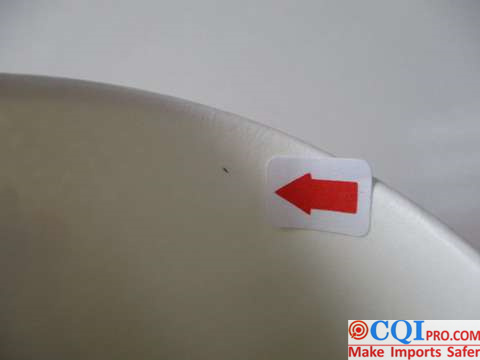

Common Defects In Paper Cup Inspection And Their Causes
Appearance class:
- Recesses and wrinkles appear in the cup mouth and cup bottom: the stiffness of the base paper is not enough and the equipment parameters are not adjusted correctly during processing and molding.
- Uneven film coating: The debugging of film coating equipment is not perfect.
- The product hasdirt: the product was not thoroughly cleaned during film coating and the ink marks left during printing.
- The printed pattern is not clear, the color is not uniform and there are spots.The ink quality is not good, the color ratio is not correct, and the drying of printing is not enough.
- Paper cups have peculiar smell: choose inferior base paper or inferior ink.
Functional category:
- Product capacity does not meet the requirements: equipment debugging is wrong;
- Leakage and water seepage at the bottom and side: raw materials are inferior,the assembly and adhesion are not tight.
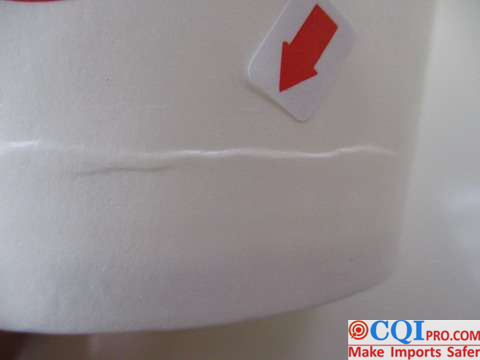
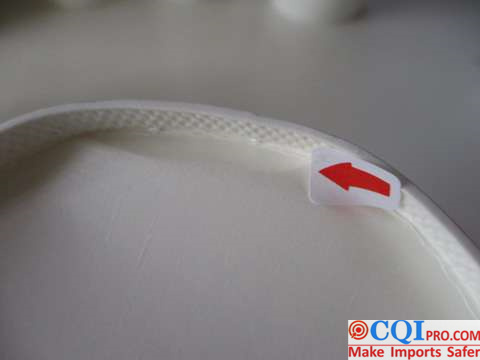
Paper Cup Inspection-Product testing
On-site testing of inspectors in paper cup inspection
1.Appearance quality: The appearance of paper cups, printed coatings and peculiar smell are judged by vision and smell; The parts of paper cups without printing should be measured with a ruler.
2.Capacity: You can choose one of the following two methods in paper cup inspection.
A.Weight method: First weigh each empty cup and it called M1. Then add water into the empty cup until the top of the water surface in the cup is level with the plane of the cup mouth,the weight is called M2, so the capacity is M2-M1.
B.Capacity method: according to the size of the paper cup, take the measuring cylinder with corresponding capacity, add water into the cup until the top of the water surface in the cup is level with the plane of the cup mouth, then carefully pour water into the measuring cylinder, read and record.
3.Leakage performance ( normal temperature water or boiled water ): add water into the cup about 6mm from the plane of the cup mouth, then place the water-filled paper cup on a dry glass plate or flat plate or white paper.After standing for 2 hours,observe whether there is any leaking watermark on them.The standing time will be changed according to the requirements of different customers.
4.Cup lid assembly: Assemble the cup body with the cup lid that meets the requirements and check whether the cup lid matches the cup body.
5.Inspection of glue adhesion fastness: Pull the glue adhesion place for many times to check whether it is broken.
6.Abuse Test: Pull the cup mouth several times to check whether the cup mouth is easy to deform.
7.Color verification: according to the color number given by the customer, check the Pantone color card to complete the final step of paper cup inspection.
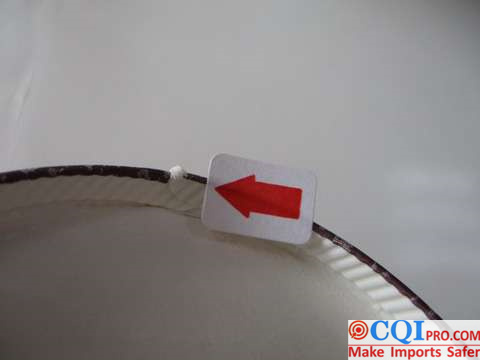
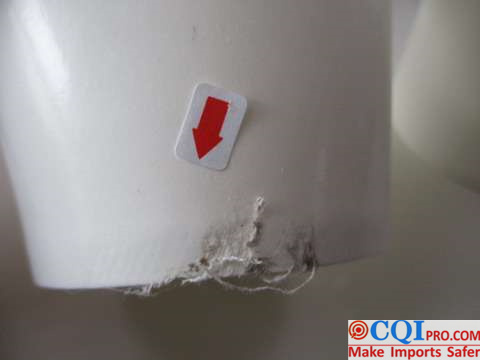

Laboratory testing
- Cup body stiffness: Place the paper cup to be tested on the movable sample rack of the cup body stiffness tester, adjust the height of the rack so that the measuring head is close to the side wall of the paper cup.The vertical distance between the measuring head and the cup bottom is about two-thirds of the cup height, and make the cup body joint facetothe tester.Start the instrument and measure the stiffness of the cup. Five paper cups were measured for each sample, and the results were expressed as an average, accurate to 0.01N.
- Health indicators: heavy metals, fluorescent substances, decolorization test and microorganism determination are in accordance with GB/T 5009.78;The determination of evaporation residue and potassium permanganate consumption is in accordance with GB/T 5009.60.
CQI5 is committed to providing importers worldwide with product quality inspection services that far exceed those of our peers. If you are planning to import or have imported from China or Southeast Asian countries, please contact us cs’@’cqipro.com to learn more about how we can make your imports safer.
This article is an original article for CQI Inspection, who is committed to providing high-quality product inspection technology and know-how sharing for global importers and retailers to make imports safer.
All rights reserved. The contents of this website provided by CQI Inspection may not be reproduced or used without express permission.
For reprint, please contact with CQI Inspection, thank you.
